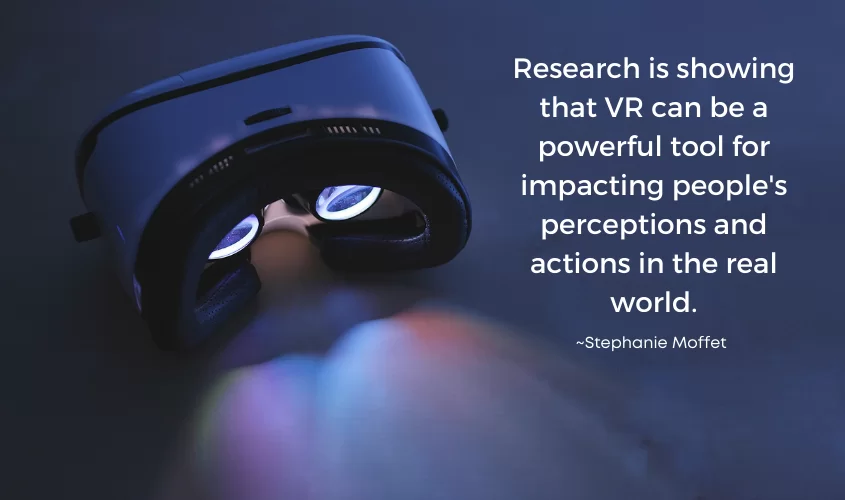Virtual Reality Assisted Therapy
What is virtual reality assisted therapy?
Virtual reality assisted therapy (VRAT) is a computer-based system that allows a user to experience a sense of presence in a computer-generated or video presented three-dimensional environment. It’s a form of therapy that utilizes the immersive experience that virtual reality (VR) technology provides to support individuals who experience anxiety related to common fears or phobias.
We make tackling anxiety and phobias a reality with the support of new advancements in the area of VR. Visual and auditory information is delivered through a head-mounted system which tracks head and hand movements so that the movements and images are experienced in a natural way allowing a client to experience a sense of full immersion into the experience.
How does virtual reality assisted therapy work?
Once virtual reality assisted therapy has been determined to be an effective form of therapy for you through one or more initial diagnostic interview(s), you are guided through a VR environment that creates a three-dimensional experience to replicate your targeted fear or phobia. By using VR, it allows for a safe and controlled delivery of sensory stimulation via the therapist and computer which leads to a more convenient and cost-effective treatment than bringing in the phobic material or going out into the potentially risky environment.
A typical treatment course for VR begins with 1–3 initial sessions in which psychoeducation occurs regarding your specific disorder, a gathering of your psychosocial history to ensure there are no other issues present that would warrant concern, and an overview of your avoidance and the rationale for your exposure. The process of VR based exposure is also typically discussed with you. It’s important to note that many virtual reality assisted therapy treatment sessions may include relaxation, and/or methods for improving your coping strategies. These can include deep breathing, improved relaxation or cognitive restructuring skillsets. Following this, the subsequent sessions will typically include VR exposure in which you progress at a customized pace through a graded exposure hierarchy or program in combination with the therapist’s recommendations.
Each step on the hierarchy can be repeated until your anxiety decreases and progressing through the hierarchy is a collaborative approach which you will discuss with the therapist before you move on to the next step in the graded exposure. We also have the ability to integrate EMDR (eye movement desensitization and reprocessing) with virtual reality assisted therapy for advanced therapeutic improvements.
When is virtual reality assisted therapy used?
Virtual reality assisted therapy may be a useful form of therapy for:
- Individuals experiencing phobias or anxiety related to:
- Heights
- Bugs (spiders, cockroaches, wasps/bees)
- Flying
- Underwater
- Public speaking
- Individuals who do not experience motion sickness in virtual environments
- Individuals who can wear the VR headset (this may be a challenge with glasses – contact lenses may be recommended for your session to ensure headset fit)
- Individuals interested in tackling their anxieties and phobias through immersive and supported therapy
This type of therapy may be used to treat other conditions and concerns in addition to those listed above. It may also be used in conjunction with other treatment methods. Your therapist will work with you to determine the best treatment method for your individual circumstances.
You should be aware that there is no treatment method that is successful for every person. What works for you, may not work for someone else.
What to expect from therapy
Put simply, you will get out of therapy what you put into it. It’s not a magic solution that will solve all your problems. It may involve you doing some real work and being completely honest with yourself and your therapist. Sometimes facing our truth is the hardest thing of all – but from that discomfort can come healing and growth.
This is currently offered out of our South Edmonton location. Contact us to learn more.

















